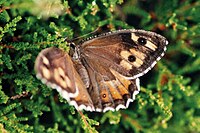
Stereotypy and spontaneous alternation in deer mice and its response to anti‐adenosinergic intervention
Sign Up to like & getrecommendations! Published in 2021 at "Journal of Neuroscience Research"
DOI: 10.1002/jnr.24867
Abstract: Repetitive behavioral phenotypes are a trait of several neuropsychiatric disorders, including obsessive‐compulsive disorder (OCD). Such behaviors are typified by complex interactions between cognitive and neurobiological processes which most likely contribute to the suboptimal treatment responses… read more here.
Keywords: deer mice; spontaneous alternation; alternation; anti adenosinergic ... See more keywords

Real-time changes in hippocampal energy demands during a spatial working memory task
Sign Up to like & getrecommendations! Published in 2017 at "Behavioural Brain Research"
DOI: 10.1016/j.bbr.2017.02.034
Abstract: Abstract Activity‐dependent changes in hippocampal energy consumption have largely been determined using microdialysis. However, real‐time recordings of brain energy consumption can be more accurately achieved using amperometric sensors, allowing for sensitive real‐time monitoring of concentration… read more here.
Keywords: task; real time; energy; spontaneous alternation ... See more keywords

Walking through virtual mazes: Spontaneous alternation behaviour in human adults
Sign Up to like & getrecommendations! Published in 2020 at "Cortex"
DOI: 10.1016/j.cortex.2020.01.018
Abstract: Spontaneous alternation behaviour (SAB) is the tendency to systematically alternate directional choices in successive maze arms. Originally discovered in rats, SAB has been extensively investigated in a broad range of species. In humans, however, SAB… read more here.
Keywords: walking virtual; virtual mazes; spontaneous alternation; alternation ... See more keywords

Spontaneous alternation behavior in larval zebrafish
Sign Up to like & getrecommendations! Published in 2017 at "Journal of Experimental Biology"
DOI: 10.1242/jeb.149336
Abstract: ABSTRACT Spontaneous alternation behavior (SAB) describes the tendency of animals to alternate their turn direction in consecutive turns. SAB, unlike other mnestic tasks, does not require any prior training or reinforcement. Because of its close… read more here.
Keywords: spontaneous alternation; alternation behavior; behavior larval; larval zebrafish ... See more keywords